There is hardly a person who is indifferent to the taste of cherries. Therefore, many gardeners grow this tree in the dachas. Sweet cherry is a very demanding culture. To get a rich harvest, it is important to choose a high-quality seedling, to observe the terms and rules of planting. In the first year of life, the tree requires special attention and quality care.
Content
Benefits of Autumn Planting
Cherry is usually grown in the south of Russia, as it is very sensitive to lower temperatures. But thanks to successful breeding work, varieties resistant to frost and starting to ripen early appeared. Growing such cherries will be successful in more northern regions.
In the south of the country, it is preferable to plant this crop in the fall, when the trees drop their leaves. When planting in the spring months, there is a high probability of damage to the fragile tree due to the intense heat at the end of March or in April, infection by insects and dry winds. In the case of autumn planting, the tree takes root and manages to grow stronger until spring. In the southern part of the country, no significant frosts occur in winter.
In Siberia, Central Russia and the Far East, cherries are planted in spring. Then over the summer the plant manages to grow stronger and takes root. During spring planting, the tree is constantly inspected - it is irrigated on time, protected from harmful insects and diseases.
To protect against winter frost, seedlings are sprinkled on top with soil and snow. To avoid damage from the bright sun, sheets of plywood are placed on top.
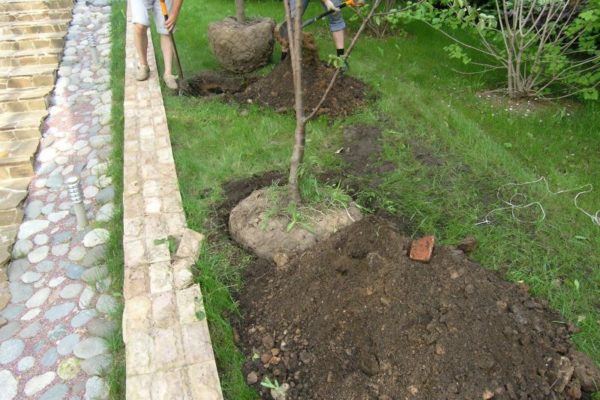
Selection of sweet cherry seedlings
Preservation of varietal traits is not possible when growing this culture by the stone fruit method. Therefore, before planting cherries in spring or autumn, to obtain a high-quality crop, seedlings of this crop are already grown in special nurseries.
Choosing a suitable seedling, it is evaluated according to the following parameters:
- Select specimens with a noticeable scion trunk. They show all varietal characteristics.
- Take into account the presence and condition of the main conductor. If it is not, the tree will branch strongly and be stunted. If it is broken, competitors form in it, which adversely affects the state of the tree.
- Preference is given to seedlings with well-developed roots longer than 15 cm long. They should be resilient, without signs of mechanical damage, of a light cream color on the cut.
- For better survival, instances of 1-2 years of age are chosen.
Grade selection
For successful cultivation, only zoned varieties adapted to the local climate are acquired. It is especially important to observe this rule for northern areas with long and frosty winters. When choosing a variety, they pay attention not only to the maximum minus temperature, but also to resistance to temperature extremes and return frosts.
Saplings with a low level of winter hardiness will die if the temperature drops to -2 degrees after a short thaw.In this case, to protect experienced gardeners, I advise you to build a fire near the seedling so that smoke enters the tree.
The characteristics of the soil, the duration of illumination and the number of sunny days, and the constant cold wind also influence the quality of the crop. Ignoring these parameters leads to the fact that the tree does not grow well, gives a low yield or even dies.
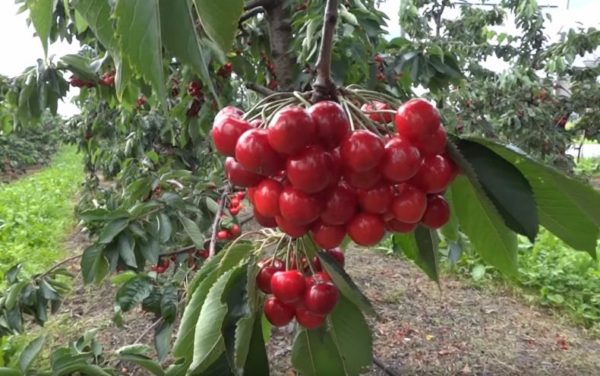
Recommended varieties depending on the region:
| central region | Northwest region | Siberia | Far East |
| Pink sunset | Dawn | Symphony | Ordynka |
| Valery Chkalov | Leningrad black | Tyutchevka | Sakhalin |
| Krasa Zhukova | Bryanochka | In memory of Astakhov | Francis |
| Italian | Revna | Fatezh | Bigarro Damascus |
| Iput | Bryansk pink | North | Drigana yellow |
Seedling preparation
To protect against damage, the roots of purchased seedlings are wrapped with a wet cloth and oilcloth. Then, before planting, they carefully inspect the plants and, if necessary, perform the following actions:
- cut off all the disheveled ends;
- shorten too long roots that do not fit in the planting pit so that they do not freeze in frost;
- soak the root system for 2 hours in water to moisturize, if there are dried roots, the duration of soaking is 10 hours.
If there are leaves on the branches of a seedling, they are cut off. This will protect the plant from dehydration.
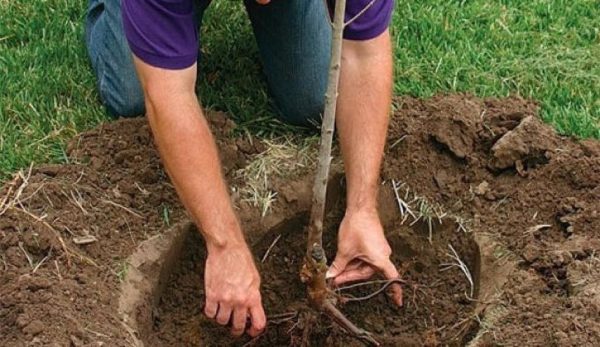
Site selection
For good growth, cherries need loamy or sandy loam soil, since it best meets the needs of the root system for good breathability and water permeability. Fertilizers added to such soil are quickly distributed, penetrate the roots and saturate the tree with the necessary minerals.
Ground water in the selected area should be suitable at a depth of not less than 1.5 m. Otherwise, moisture stagnant at the roots will cause rot. If the depth of the groundwater does not meet these requirements, dig a drainage ditch to collect excess moisture.
For cherries, an abundance of sunlight is important. Therefore, a site for it is chosen on the south side, away from shading trees and buildings.
Soil preparation
Before the autumn planting in 2-3 weeks on the selected site, the soil is completely dug up, while at the same time introducing a humus bucket per square meter. If the soil in the selected place does not meet the requirements, it is corrected. To do this, in a few years clay is added for sandy soil, and sand for clay soil. Additionally make humus or enrich the soil with manure and dig.
To properly plant the cherries, a hole is dug with sides of 80-100 cm and a depth of 70 cm. At the same time, the walls are made even, without narrowing down. The root system of the seedling should be freely located in such a pit. A pole is driven into the bottom, which will serve as a support for the tree.
To a third of the depths, the prepared hole is filled with soil mixture consisting of:
- 2 parts of the fertile soil layer;
- 1 part peat;
- 1 part humus;
- 50 g of potassium sulphide;
- 100 g of superphosphate.
Filling the pit is made 10 days before the proposed landing, so that the soil is a little donkey. Nitrogen fertilizers are not used so as not to damage the root system of the seedling.
Landing time
The appropriate time when it is better to plant cherries in autumn or spring is chosen based on climatic conditions. In the southern regions, it is more convenient to plant this crop in mid-September or early October.
In all other climatic zones, cherries are planted in spring, but here there are some nuances. In the northwestern region, the Leningrad region and the Far East, they are planted in late April or May. May is the right time for the Urals and Siberia. In central Russia and landing near Moscow cherries or cherries are carried out at the end of March.
Planting cherry seedlings in the open ground in autumn
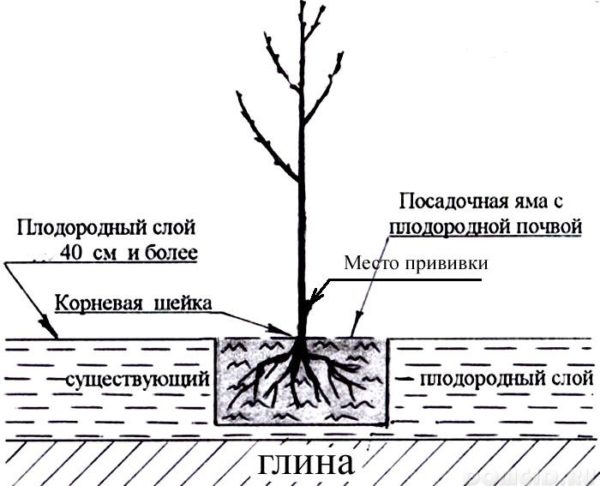
Before planting a seedling, it is important to choose the right depth. It is not necessary to lower it too much. The root neck is positioned so that it rises above the soil level by 5 cm. Then, after the subsidence of the soil, it will lower and the depth will be optimal.
Step-by-step instructions on how to plant sweet cherry in the fall:
- 10 liters of water are poured into the prepared pit.
- Place a tree near the support so that its neck is at the recommended level.
- Sprinkle the roots with fertile soil.
- The surface soil is compacted.
- The trunk is tied to a support with a non-rigid rope, forming a tight loop in the form of a figure of eight in order to preserve the bark in integrity.
- At the edges of the pit make a small groove for irrigation.
- Water the plant with 20 liters of water. It is important to ensure that the root neck remains at the level of the soil.
- The main trunk is immediately cut to 80 cm, the side branches are shortened to 50 cm. This contributes to the correct formation of the crown.
Features of care in the first year
Cherry planted in autumn is carefully prepared for the winter cold, since it is the change of weather that represents the greatest danger to it:
- The trunk is wrapped in burlap. If the winter turned out to be warm enough, periodically check the tree so that it does not bother.
- Snow is piled on the bottom of the tree to protect it from frost.
- For protection to be more effective, a spruce is fixed over the burlap.
- To prevent rodents from eating the tree bark, pesticides are laid around.
Watering
Cherry is usually watered no more than three times during the growing season. The first time this is done in May, when the tree grows green mass. Re-hydration of the soil is carried out in June before the fruit ripens. Final watering is done before winter to saturate the roots with moisture.
Soil during irrigation is soaked to a depth of 40 cm. At the same time, autumn irrigation is made more intense so that the soil gets wet to a depth of 70-80 cm. If the summer is dry, increase the frequency of irrigation. Since July, the plant is stopped being watered so as not to impair winter hardiness.
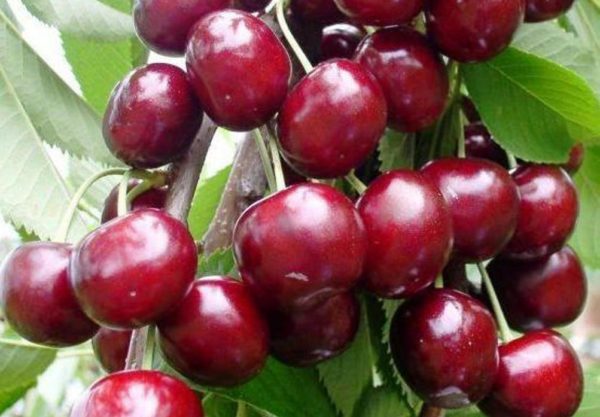
Fertilizer application
In the first year, the cherry does not need additional nutrition, since all the necessary substances were introduced during planting. In the second year of development, the plant needs nitrogen. To do this, 120 g of urea is added to the moist earth along the edge of the trunk circle.
In plants of four years of age, the root system extends beyond the near-trunk circle. Therefore, fertilizers are applied for the furrow made. In the spring, it is enough to feed the sweet cherry with 200 g of urea, covering the top dressing in moist soil. At the end of August, 100 g of potassium sulfate and 400 superphosphate are enriched with soil.
Gradually, the size of the periostemal circle is increased, annually adding 50 cm each. Sweet cherry cannot stand the neighborhood with weeds. Therefore, in the summer, weeding is mandatory.
Formative crown trimming
For a good harvest, the crown of the tree is cut every year. The branches are completely removed at 40 cm from the ground level and cover the damage with garden varnish.
With the onset of spring, before the sap flow begins, the main trunk and branches from above are cut to a third of the length. Shoots growing inside the crown are completely removed. Leave side branches located at an angle of 45 degrees to the main ones. The rest is cut out. This method of trimming gives good illumination to the tree, increases productivity and simplifies its collection.
Additionally, in the fall, sanitary pruning is performed. In this case, get rid of broken, sick and insect infected branches.
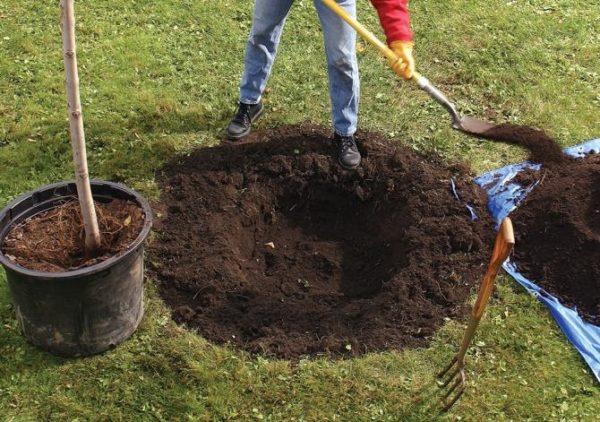
Diseases and possible problems
Cherry shows good resistance to most diseases, but there are a few exceptions. Like many stone plants, cherries suffer from verticillosis.
The first sign of this fungal disease is bark damage.Then yellowness appears on the leaves, buds fall, and gum appears on the trunk. For treatment, the tree is treated with Polychrome or Topsin. Damage to the bark is covered with clay with the addition of copper sulfate. Verticillosis is difficult to heal. Usually after a year the plant dies.
If spring comes out cold and rainy, the likelihood of bacteriosis is high. Such a disease is not treated at all. Therefore, the tree is cut down and burned so as not to jeopardize neighboring plants.
Autumn cherry transplant
Is it possible to transplant sweet cherries in autumn? This can be done if the place for the initial planting was unsuccessfully selected: the plant does not have enough light or the quality of the soil is unsuitable.
In order for the tree to successfully transfer the transplant in the fall to a new place and take root well, observe the following guidelines:
- It is allowed to transplant sweet cherries with a closed root system less than 6 years old.
- Six months before the transplant, preparatory work begins.
- A shallow ditch is broken through and a root system is cut. They fill the groove with humus and often water it during the summer. These measures enable the plant to form many small roots and in the new place the plant takes root more quickly.
- When leaf fall ends, the tree is transplanted to a new place.
- In this case, the landing pit is made 1.5 times more than an earthen coma.
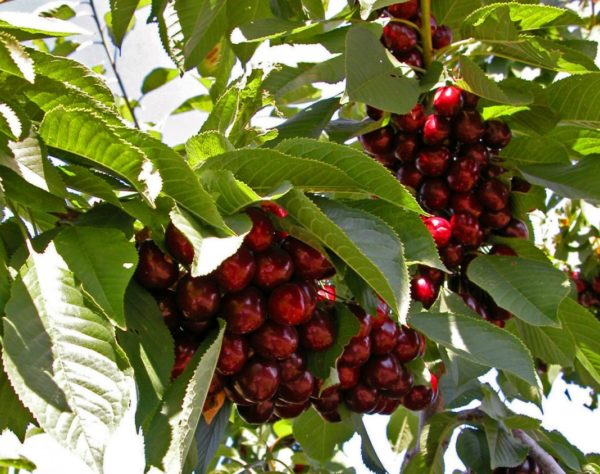
Growing Mistakes
Cherry is very demanding on proper planting and quality care. The slightest mistake or ignoring the necessary measures affects the state of the tree and productivity.
The main mistakes made by inexperienced gardeners:
| Mistake | Consequence |
| The location of the root neck is too deep | Flowering begins later than usual |
| No irrigation during flowering | A tree dumps flowers and leaves |
| Variety selection without taking into account the climate | A tree dies from frost |
| No cropping | Poor quality or lack of crop |
| Lack of cross-pollination | Sweet cherry does not bear fruit |
| Sunburn, lack of whitewash | Sweet cortex begins to crack |
| Inappropriate soil composition, soil stones and diseases | The appearance of gum on the bark and the death of a tree |
| Using cold water for irrigation | Leaves turn yellow or red |
| The trunk is not cut during landing | No lateral branching of the crown |
Subject to all the rules, the cultivation of cherries in the summer cottage does not cause difficulties. A few years after planting a seedling and careful care, the tree begins to bear fruit and delights with delicious, juicy berries.

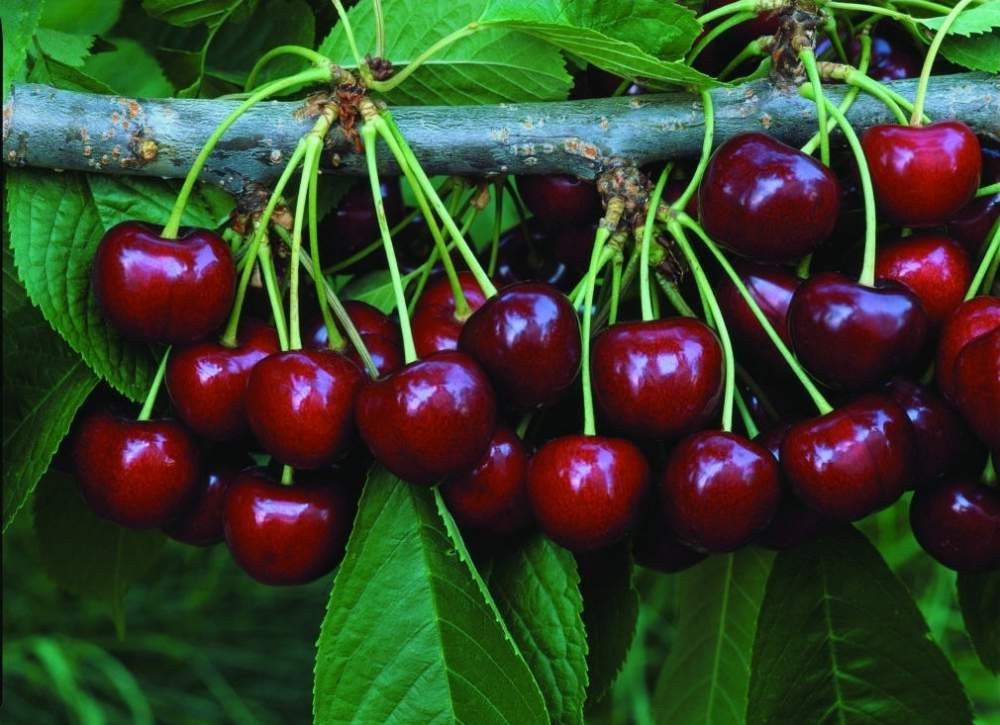
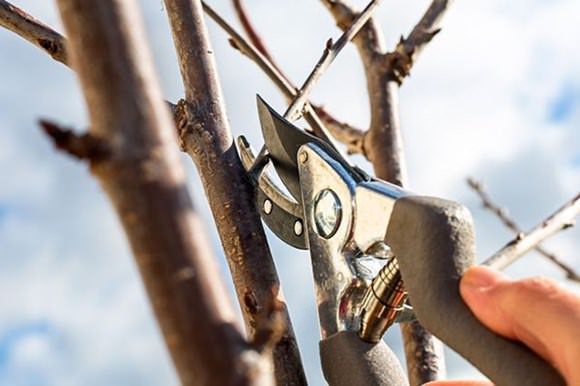
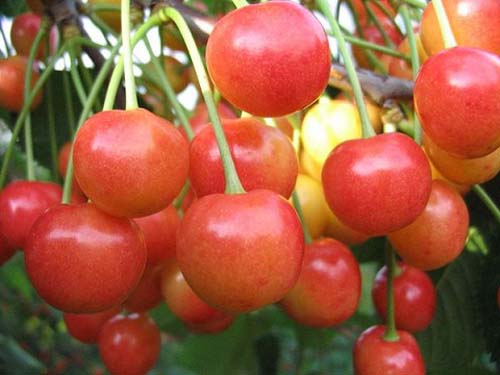
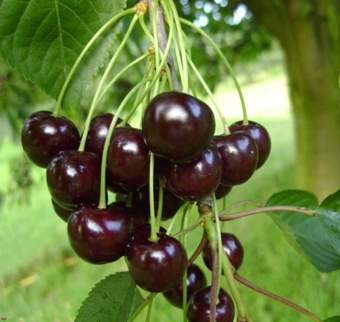 Variety of cherries "Leningradskaya black": characteristics and reviews
Variety of cherries "Leningradskaya black": characteristics and reviews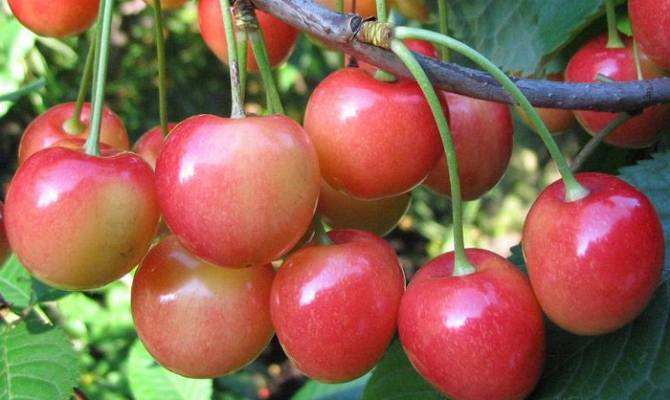 Sweet cherry "Julia": variety description, photo, reviews
Sweet cherry "Julia": variety description, photo, reviews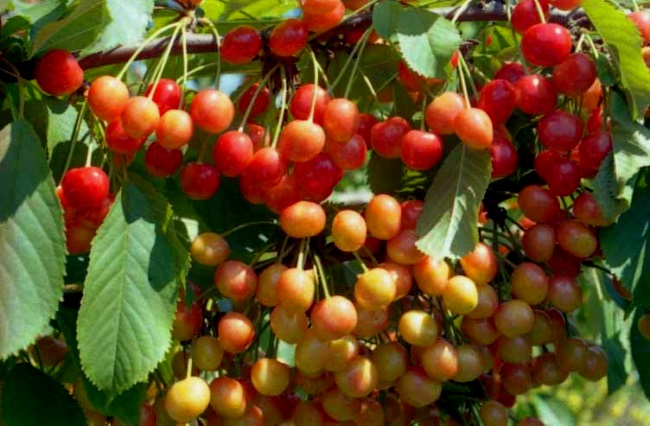 Sweet cherry "Fatezh": variety description, photo, reviews
Sweet cherry "Fatezh": variety description, photo, reviews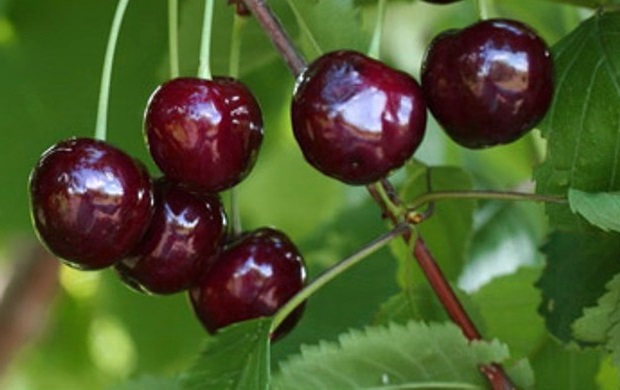 Description of cherries varieties "Iput": photos, reviews
Description of cherries varieties "Iput": photos, reviews